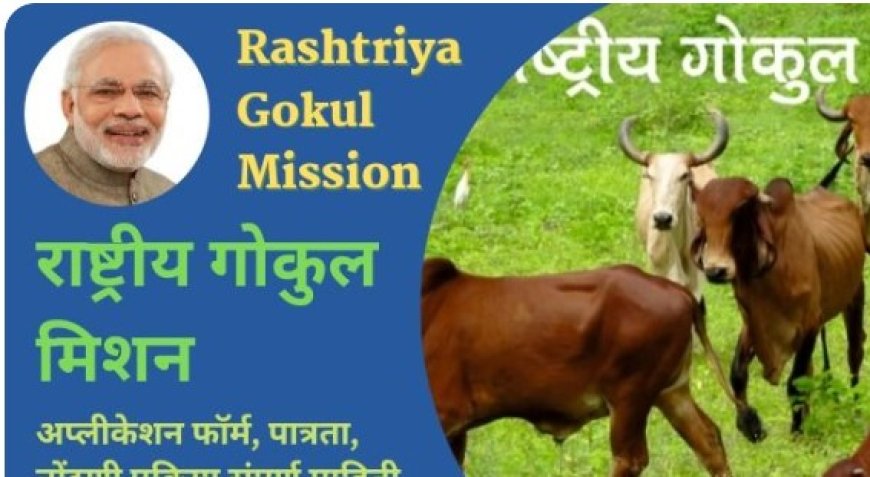Rashtriya Gokul Mission: Conserving Indigenous Cattle Breeds for a Sustainable Future
A Comprehensive Overview of the Impact of the RGM on the Dairy Sector and the Environment

Rashtriya Gokul Mission: An Advancement in the Preservation of Native Breeds of Cattle
India's government started the Rashtriya Gokul Mission (RGM) in 2014 with the goal of preserving and advancing the country's native breeds of cattle. The purpose is to ensure the welfare of cattle and boost milk output and productivity in a sustainable way.
The RGM is being put into practice through a number of projects, such as:
* The creation of Gokul Grams, or Integrated Indigenous Cattle Development Centers
* Stabilizing bull mother farms to preserve native breeds with high genetic value
* Putting in place systems for native breeds' pedigree selection
* Distributing bulls of high genetic quality who are free of disease for natural services
* Offering farmers incentives to keep superior animals of native breeds
The protection and advancement of India's indigenous cattle breeds have been significantly impacted by the RGM. In the time since the mission began, there are now more than 10% more native cows. The milk produced by native cows has also improved as a result of the program.
Some of the main advantages of the Rashtriya Gokul Mission are as follows:
Preservation of native breeds of cattle: Native cow breeds adapt well to the climate and environment of India. Additionally, they are pest and disease resistant. These priceless breeds are being preserved and kept from becoming extinct thanks to the RGM.
Enhanced productivity and production of milk: Native American cow breeds are renowned for their excellent productivity and milk production. By giving farmers access to high genetic merit bulls and other resources, the RGM is assisting in the sustainable improvement of milk output and productivity.
Farmers' lives are improved: Farmers' livelihoods are being enhanced by the RGM because it offers incentives to keep superior animals of native breeds. In the dairy industry, the mission is also contributing to employment creation.
Environmental advantages: Native cow breeds are good for the environment as well. Compared to exotic breeds of cows, they produce less methane. The RGM supports sustainable dairy production practices and lowers greenhouse gas emissions.
An encouraging move in the direction of preserving and growing India's native cow breeds is the Rashtriya Gokul Mission. Farmers' livelihoods, the environment, and the dairy industry are all benefiting from the mission.
To sum up
An inspiring project that is significantly improving the lives of Indian farmers and livestock owners is the Rashtriya Gokul Mission. The goals are to support sustainable dairy farming, increase milk production and productivity, and aid in the preservation of native cattle breeds. The RGM is a positive step toward positioning India as a worldwide leader in the dairy industry.










































































































































































































